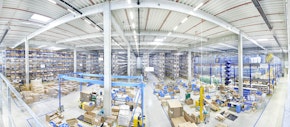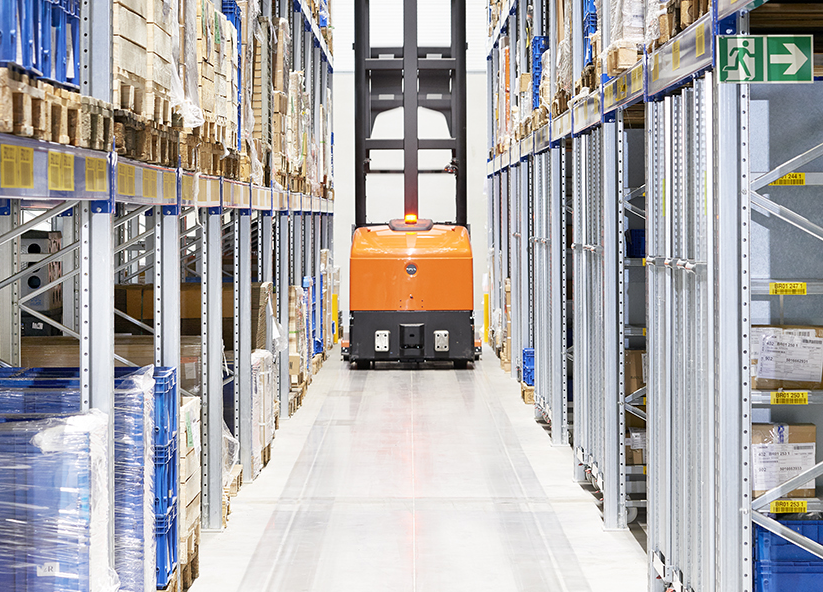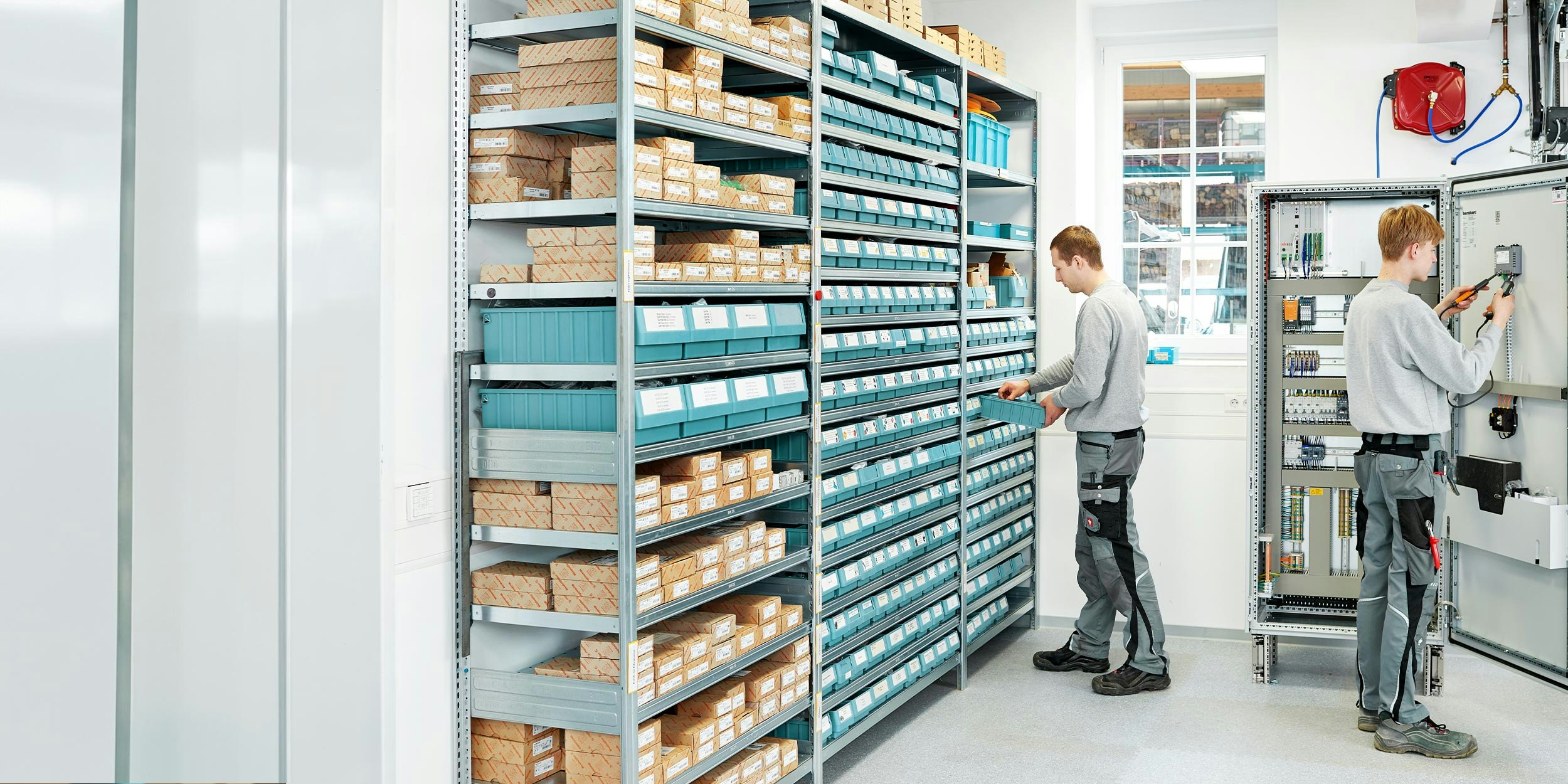Logistic malls - the warehouses of the future

By definition, logistics malls are innovative solutions that bundle various logistics services and are characterised by their central location and integration of different services. The logistics centres of the future will contribute to increasing efficiency and sustainability in logistics, particularly in the context of urbanisation and e-commerce growth. The importance of modern logistics centres is underlined by the need for fast delivery times and the shortening of supply chains. In addition, logistics shopping centres promise efficiency, speed and flexibility in warehousing and shipping, thereby meeting the increasing requirements of e-commerce and just-in-time deliveries. The demand for fast, flexible and sustainable supply chain solutions will continue to rise in Germany and worldwide. Logistics malls fulfil the high requirements and play a central role in the evolution of logistics companies and the logistics sector. With advancing technological developments and the increasing focus on sustainability and efficiency, logistics shopping centres will continue to gain in importance and establish themselves as an essential component of modern supply chains.
Advantages of logistics malls over traditional warehouses
Logistic malls have a whole range of advantages over normal warehouses. These are first and foremost the integration of advanced technologies, the strategic choice of location and the focus on flexibility, sustainability and efficiency. Many traditional warehouses are specifically designed to meet the needs of a single company or a very limited number of business partners. Modern logistics centres handle the order processing of many different companies, allowing them to benefit from economies of scale. By specialising in efficient order processing for companies and increasing optimisation, the latest technologies are used. Modern logistics centres of the future will be fully digitalised and have a very high degree of automation in order to meet the industry standard 4.0 or Logistics 4.0. On the physical side, for example, cobots, picking robots, automated guided vehicles (AGVs), autonomous mobile robots, fully automated storage systems and conveyor technology as well as innovative, automated transport solutions such as drones will be used. Digital and virtual warehouse solutions in the field of warehouse logistics include modern warehouse management and warehouse management systems (WMS), the Internet of Things (IoT), artificial intelligence (AI) such as predictive analysis, digital twins, software for digital supply chain management, real-time inventory determination and much more. The use of AI-supported robots in warehouse logistics is also very promising.
Trends and technological innovations
It is interesting to see how the social, economic and technological environment for companies and their logistics is likely to develop. A further increase in e-commerce and therefore fast, precise but also flexible logistics is to be expected. At the same time, urbanisation is on the rise, which means that urban open spaces are becoming scarcer and the construction of logistics centres here is becoming expensive. This is leading to the establishment of conveniently located logistics centres on the outskirts of cities or in the region. Fully automated micro fulfilment centres (MFCs) are more likely to be found in urban areas. MFCs utilise advanced automation, robotics and software for efficient logistics processes. They have a modular structure and enable easy customisation and scaling. Thanks to automation and a high storage density, they require little space and personnel. MFCs comprise several logistics modules such as a high-density warehouse system (e.g. Autostore, shuttle systems, AGVs for storage and order picking, etc.), a WMS, e-commerce shops and a digital operating platform.
Large, modern and smart logistics centres for distribution logistics will be conveniently located near metropolitan areas or regionally, for example at motorway hubs. These centres are networked via the IoT, hyper-automated and are constantly updated with the latest technologies to increase efficiency. The centrepiece of the smart logistics mall is a digital twin that maps the warehouse and all the processes that take place in it. The digital twin is a virtual image of the real warehouse system with all components such as racking, stacker cranes, industrial trucks, conveyor systems, articles, etc.. The physical system is linked to the digital twin to form a cyber-physical system by exchanging relevant data via sensor nodes. The digital twin of the smart warehouse can thus be used for model-based, real-time analysis and optimisation of process-relevant parameters. One example of this is the prediction of demand for certain products based on historical and real-time data from the logistics supply chain. Other applications of AI-supported predictive analysis include inventory optimisation, predictive maintenance, correlation of a wide range of customer data for better business decisions, optimisation of resources and cost savings. In the logistics centre of the future, AI-controlled robots, autonomous mobile robots (AMR), AGVs and drones will be at work. Swarms of robots that fulfil tasks together are also conceivable. The individual robots, also known as agents, communicate with each other and make joint decisions to complete the required task. To enable smart warehousing, all logistics areas from goods receipt, storage and sorting through to packaging and dispatch must be digitally networked via a warehouse management system (WMS). Order picking will also be more automated and optimised. The WMS plays a major role here, but so do picking robots, intelligent cobots and augmented reality (AR) glasses.
How sustainable are logistics malls?
Logistics malls can make a major contribution to sustainability through their efficient design and the use of modern technologies. They minimise energy consumption through the use of renewable energy and energy-efficient systems, reduce transport emissions due to their proximity to urban centres and improve resource efficiency through advanced inventory management and waste reduction. The integration of AI and IoT also promotes optimised warehousing. Modern logistics centres must continuously optimise their operations and minimise potential negative environmental impacts in order to fully realise their environmental and social benefits.
What significance do logistics malls have for the modern supply chain?
Logistics malls have become an indispensable hub in the modern supply chain, as they act as efficient multifunctional centres that not only bundle storage and distribution, but also production in some cases. Their strategic proximity to urban centres optimises the last mile of delivery. This ensures competitive advantages through fast delivery times in e-commerce. By using advanced technologies and a high degree of automation, logistics malls achieve a significant increase in efficiency. This naturally also reduces operating costs. They also offer a flexible infrastructure that enables rapid adaptation to changing market requirements. In addition, modern logistics centres make an important contribution to sustainability by consolidating logistics processes and using environmentally friendly technologies. As an interface between e-commerce and traditional retail, they support omnichannel strategies, enable online orders to be processed quickly and thus improve the customer experience. Logistic malls therefore represent a central pillar in increasing efficiency and promoting sustainability within supply chains.


